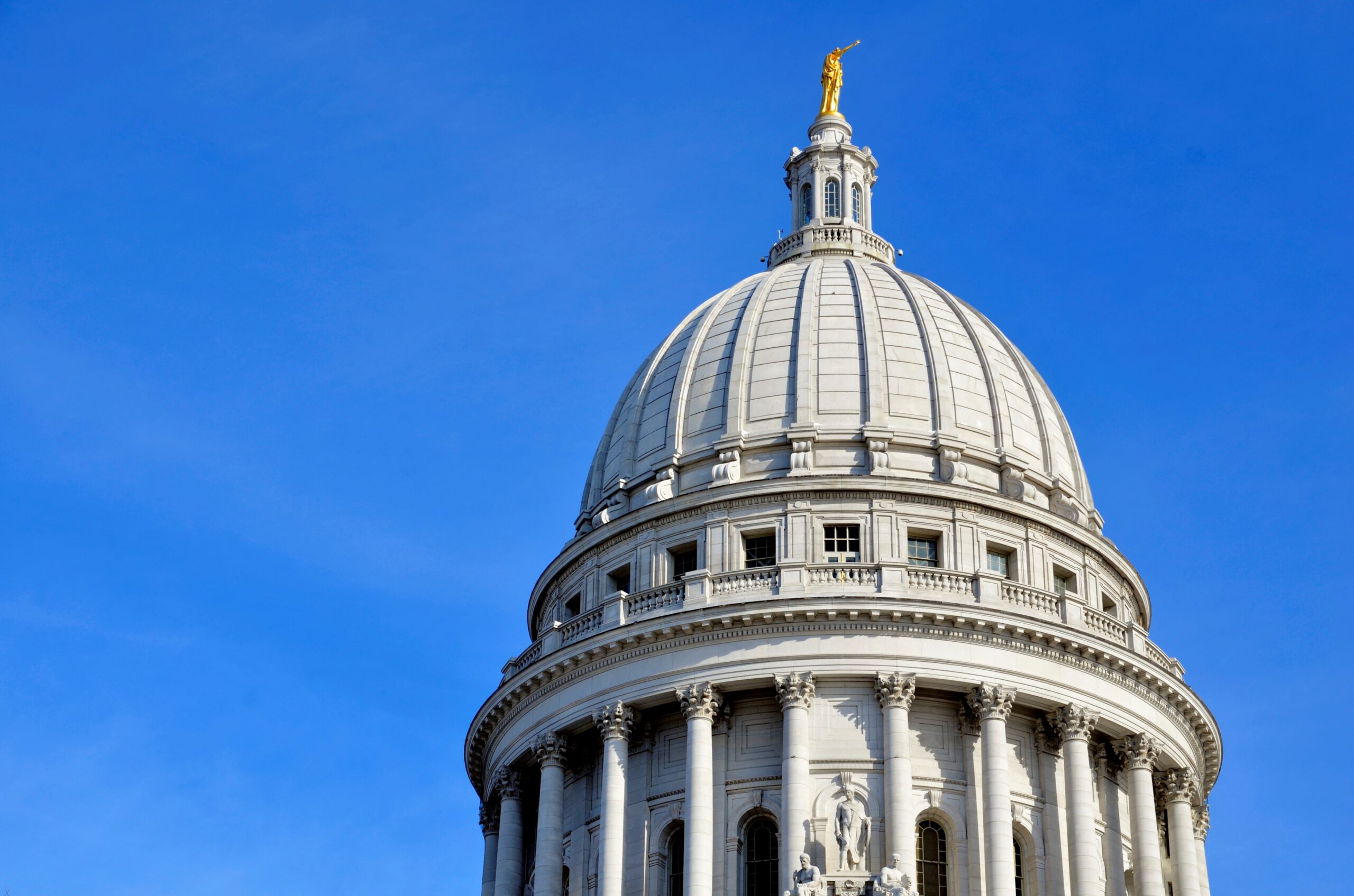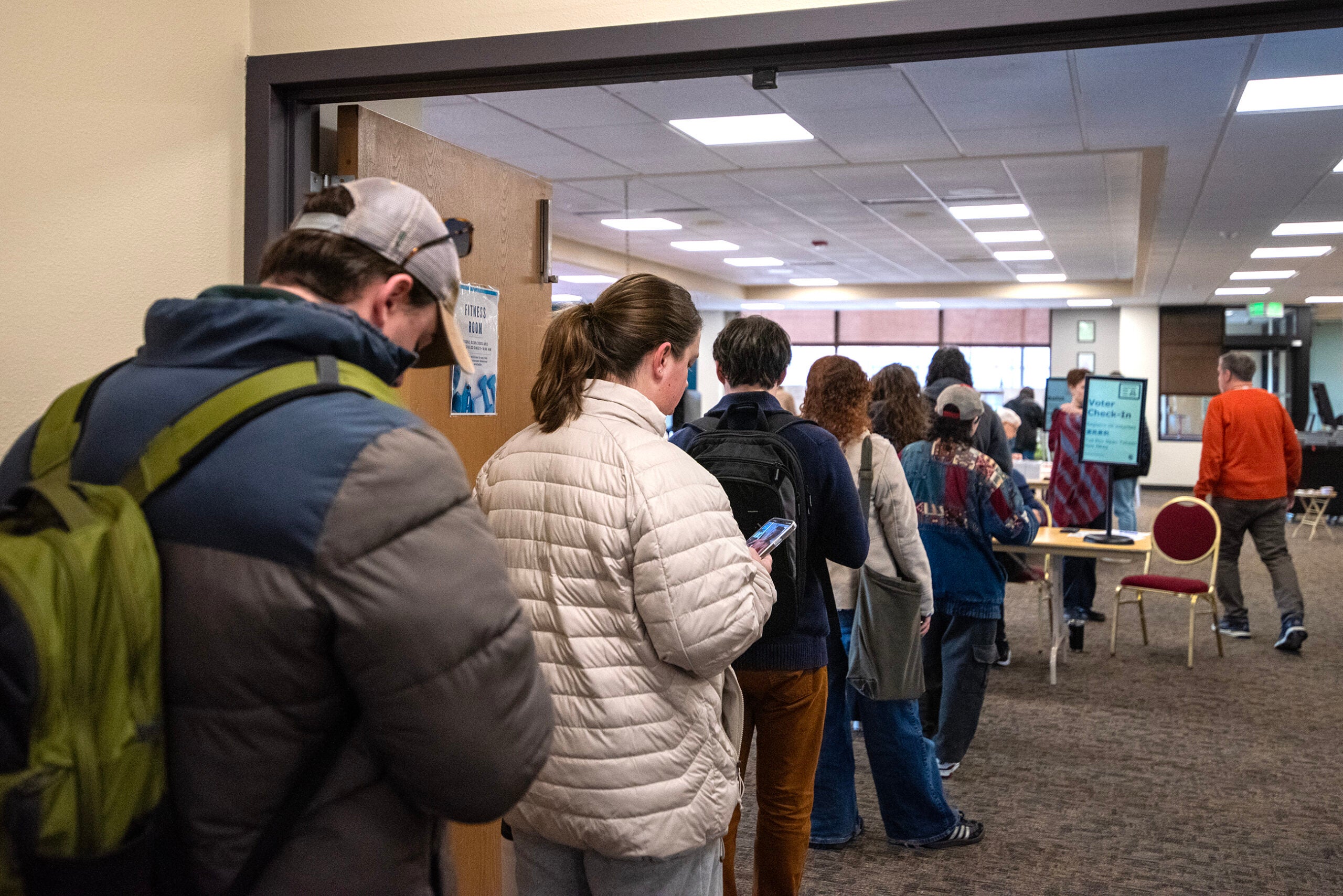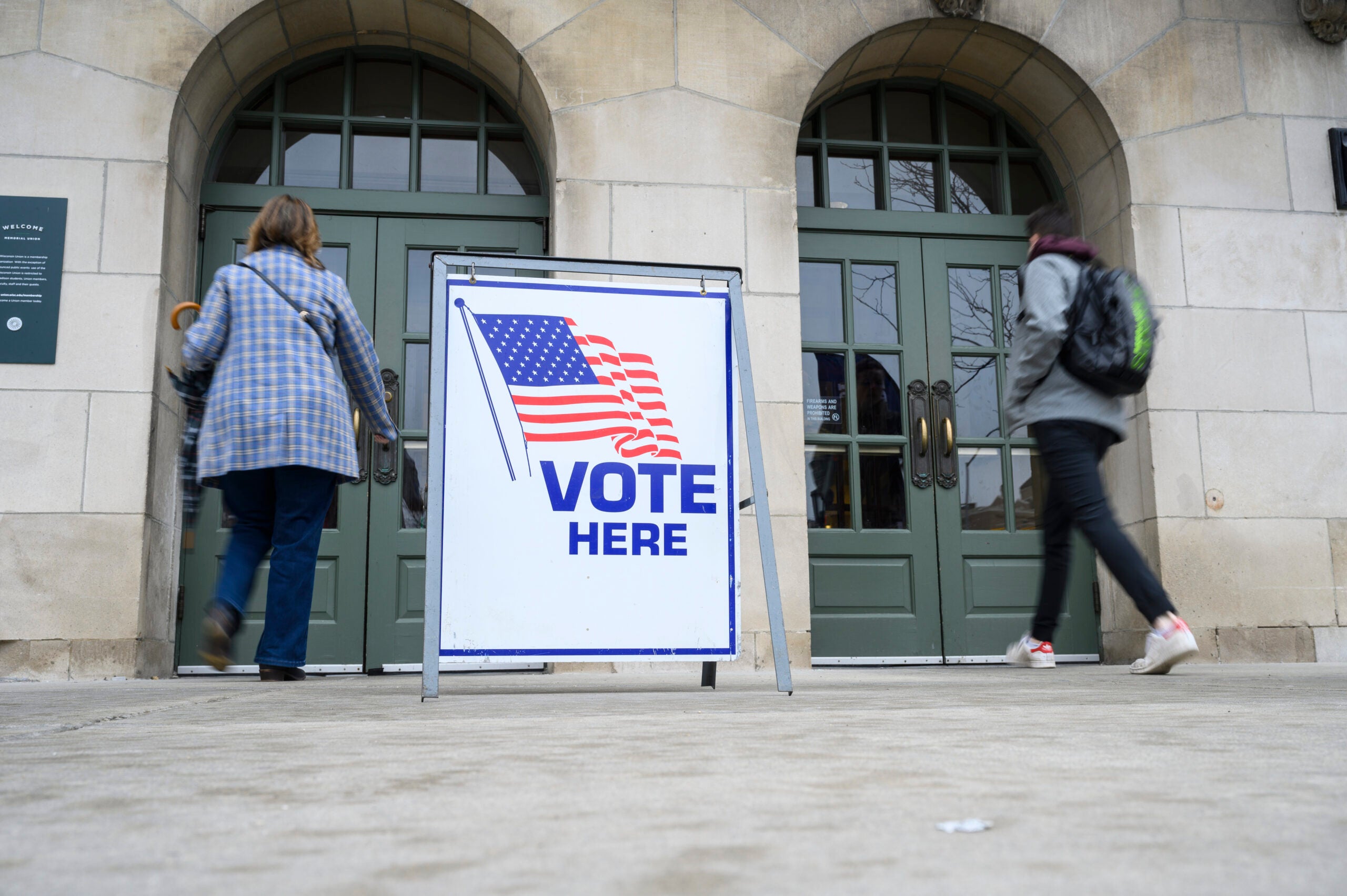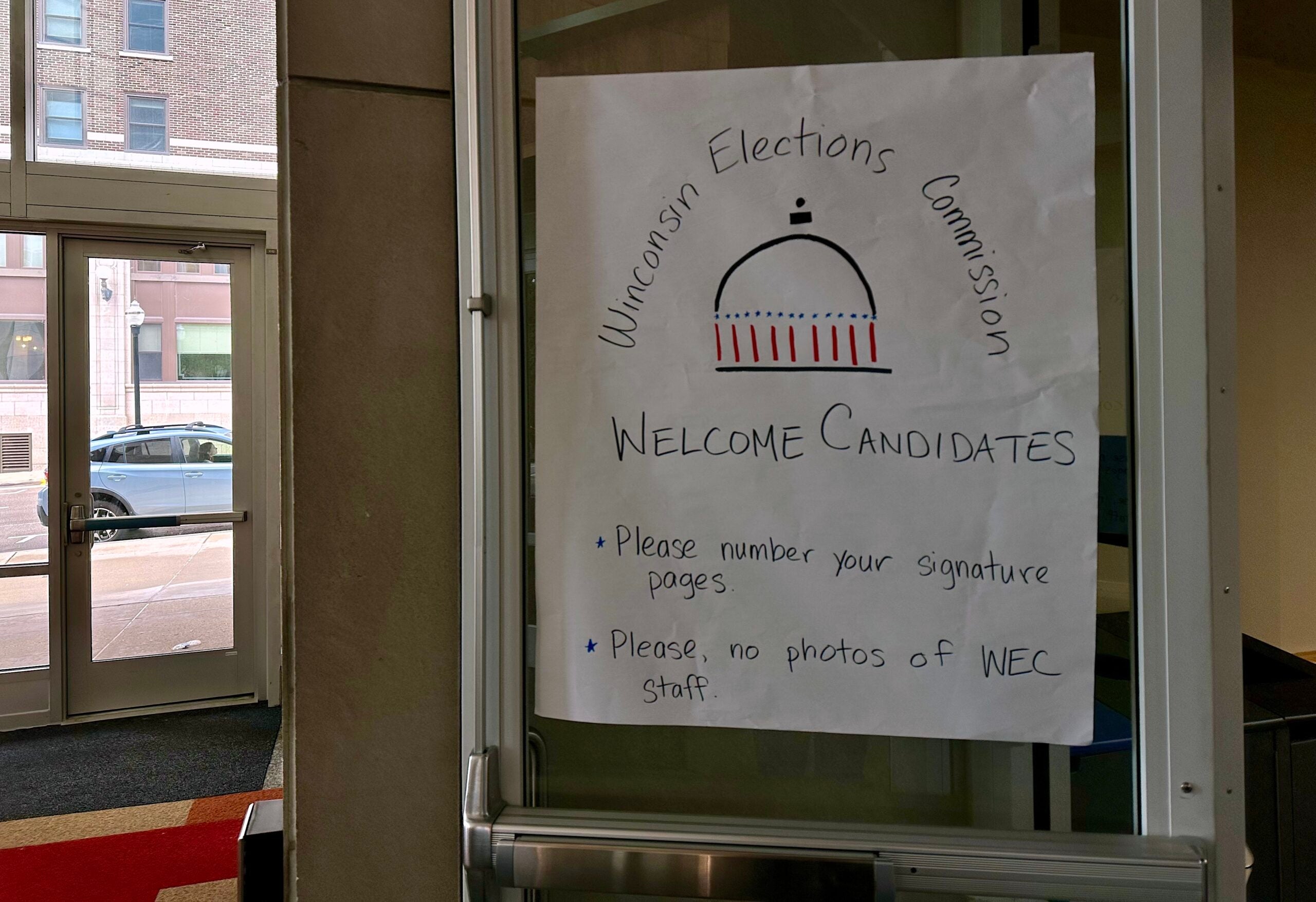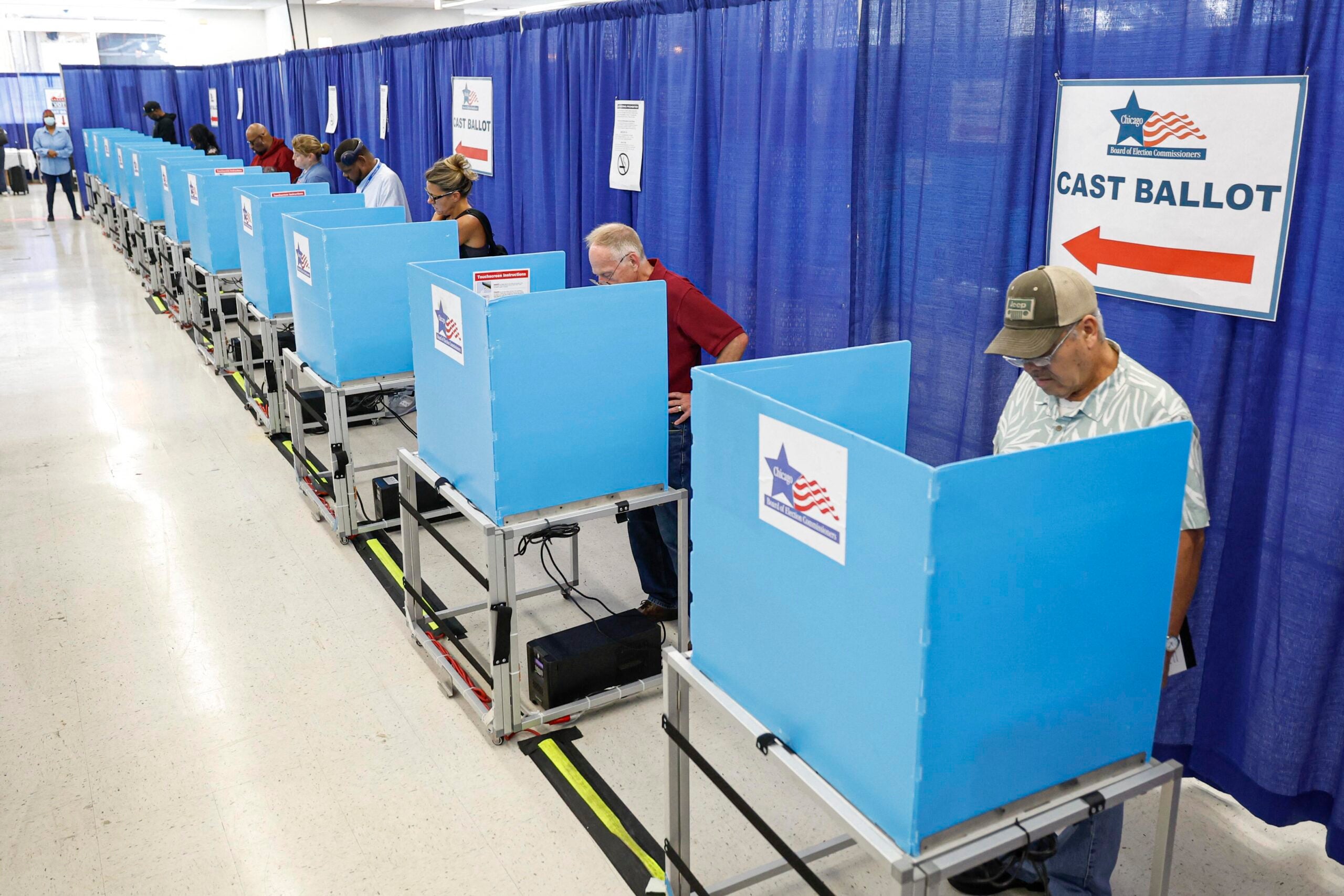The Wisconsin Elections Commission deadlocked again Monday on what to do next after a circuit court judge ordered the state to purge more than 200,000 names from Wisconsin’s voter registration list.
It’s the second time in less than a month that the commission, which is split evenly between Republicans and Democrats, has been unable to agree on how to address the court order by a circuit court judge.
That original order has since been appealed and a new lawsuit has been filed in federal court attempting to block it.
Stay informed on the latest news
Sign up for WPR’s email newsletter.
Elections Commissioner Mark Thomsen, one of the panel’s Democrats, said those lawsuits should be allowed to play out before the voting rolls are changed.
“It would seem to me premature and wrongheaded for the commission to jump ahead,” Thompson said
Earlier this month, Ozaukee County Circuit Judge Paul Malloy ruled in favor of plaintiffs in a lawsuit filed by the conservative Wisconsin Institute for Law and Liberty, known as WILL. They argued that the Wisconsin Elections Commission was violating state law by not removing thousands of people from voting rolls who were suspected to have moved.
The voters were identified by what’s known as the Electronic Registration Information Center (ERIC), a nonprofit, multi-state system that helps member states keep their voter registration lists current. ERIC identifies people who may have moved after they file official paperwork with another government agency like the Department of Motor Vehicles.
The Elections Commission voted earlier this year to send a mailing to more than 230,000 voters stating that they’d been flagged as having moved. But the commission’s original mailing also told voters that they would not be automatically removed from the state’s registration rolls until 2021.
At the time, the Elections Commission argued that state law gave it discretion on whether to immediately rescind a voter’s registration. It said that discretion was necessary given the state’s previous experiences with the ERIC system in 2017, when voters who had not moved were mistakenly tossed off the rolls.
Malloy rejected that argument, ruling on Dec. 13 that the state must remove the names from Wisconsin’s voter rolls immediately.
Wisconsin’s Elections Commission met just days later, voting 3-3 on Dec. 16 on a motion that would have immediately purged the state’s voter rolls. With the commission’s even split, a bipartisan vote is required to accomplish anything.
The Wisconsin Department of Justice, led by Democratic Attorney General Josh Kaul, appealed the initial ruling in state court, and WILL asked the Wisconsin Supreme Court to take the case directly.
At the same time, the Wisconsin League of Women Voters filed a new lawsuit in federal court in an attempt to block the initial ruling.
Republican Dean Knudson, a former GOP state lawmaker who chairs the Elections Commission, said Monday that he felt it was important for the commission to take action following the court order by Malloy.
“We are under a court order from the circuit court in Ozaukee County to follow the law,” Knudson said. “I wish the law was clearer. But I feel like we need to do our best to follow the law.”
But the commission’s Democrats, like Ann Jacobs, said the system used to flag voter names was flawed and it was unclear if the state even had the authority to remove people.
“The right to vote is of such power that the idea that we’re going to simply kick people off the rolls because of a poor data match is astonishing,” Jacobs said.
The case is being closely watched because of Wisconsin’s potentially pivotal role in the 2020 election and its recent history of close finishes.
For example, the 2019 Wisconsin Supreme Court race and the 2016 race for president were both decided by margins of less than 1 percent, and the 2018 race for governor was decided by just over 1 percent.
Wisconsin Public Radio, © Copyright 2025, Board of Regents of the University of Wisconsin System and Wisconsin Educational Communications Board.
